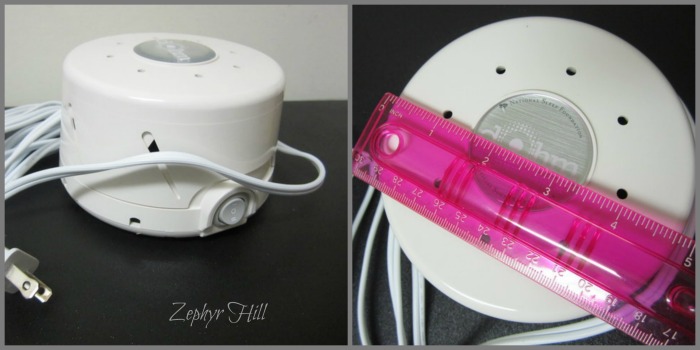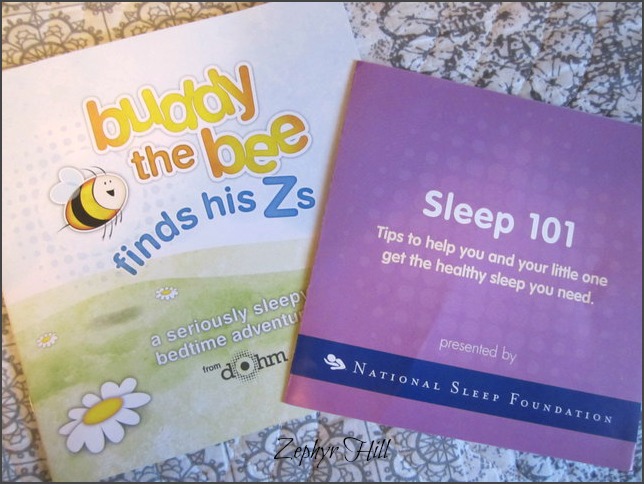Ahhh, sleep! Such a wonderful word. Such a wonderful concept! But the reality is that when you have young children, restful sleep is something you often long for but rarely seem to get your fingers on. I want to share with you some sleep tricks we’ve learned over the years with our seven children. NOTE: these are for older babies and children, not young infants who have a natural need for frequent feeding day and night.)
- At naptime or bedtime, keep interactions to a minimum. That means while dressing and doing the diaper change don’t sing songs, play games or make too much eye contact. Stimulation will actually cause your baby’s heart rate to speed up and blood pressure to rise; neither is conducive to restful sleep.
- Have a pleasant, consistent routine. With my first born I had a lot more time. We’d do a bath and a storybook and a song every night. Fast forward 11 years and 7 children later! Now there’s not really time for baby massages and warm baths with essential oils. 🙂 So I just dress and diaper the baby with the lights low and that serves as an easy visual cue that sleep time is coming. If they are still nursing, I have a rocking chair we always go to. Sleep routines do not have to be elaborate. The key is to find a consistent cue that communicates “night time” to your baby.
- Use white noise to create a calming, consistent and audible backdrop to the sleep experience. We use the Dohmie sound conditioner, which you can read more about below.
- Limit caffeine intake after lunch time if you’re breastfeeding. What you drink, baby drinks to some extent. A big strong cup of coffee in the afternoon might perk you up, but it can result in a wakeful baby that night.
- If you are cloth diapering, put a lot of time and effort into finding a bulletproof nighttime diaper so baby is less likely to wake for a change.
- Try putting your child to bed when he is drowsy or drifting off, but not actually asleep. Come back every so often to soothe and settle him again, but let him fall asleep on his own. Make sure before you do this that all of baby’s needs are met (fed, dressed, changed). It’s a fact of life that little ones (and adults, too, by the way) often wake up when they don’t actually need anything except to go back to sleep. If you’ve taught them to go back to sleep unassisted, then it will be less disturbing for everyone, including the baby.
- If your baby is using a sleep aid like a pacifier, it will pay to break this habit as early as possible. Babies might wake up every time it falls from their mouth and cry until you come and pop it back it. Or they won’t nap if it’s lost or they are not home and it’s unavailable for some reason. It’s a catch-22 in that pacifiers can help them fall asleep and stay asleep, but they can also create their own set of headaches.
- Find the best place for your baby to sleep. It might be your bed, a bassinet or a crib. It might be in your room, in a separate room, or with other siblings. We’ve utilized all kinds of sleeping arrangements over the years and did what worked best at the time, and for that particular child.
- Ignore nighttime antics. Every once in a while, 13-month-old Erik wakes in the night and suddenly wants to babble, play or horse around. My opinion? It’s 3 a.m. and that’s sleep time! So we don’t respond at all. He fusses and whines a little, but eventually gets the message and goes back to sleep. Only a few of our children have done this over the years, and they grew out of it very quickly and only after a few “episodes.”
- Encourage older children to fall back asleep in their own beds. Do you have a child that consistently appears at your door or bedside wanting to sleep with you? My favorite method to deal with this is Dr. Greene’s Free Pass. It gives a child the security he needs, plus helps him learn to go back to sleep in his own room.
- Avoid the dreaded second wind! We still make this mistake sometimes. Miss your baby’s sleep cues (eye rubbing, fussiness, whining, losing interest in toys and people) and you might find yourself with what’s ironically called an “overtired baby.” They are SO tired that can’t seem to sleep at all. When it comes to sleep, seize the moment! There will be less crying and less re-waking.
- Don’t be a sleep martyr. You might have heard this before: “My toddler wakes up constantly and wants to nurse. I know she needs me but I’m turning into a zombie!” While a newborn needs frequent feeding at night, an older child (i.e. a year or more) generally does not. If neither you nor your child is sleeping well, be flexible and make some changes. No one should feel guilty for wanting better quality sleep. It’s a normal and natural human need. Mothers too often feel trapped in a “my child needs me 24/7” kind of mentality; don’t do this to yourself. You’re a person with needs, too. Motherhood is certainly about making sacrifices and giving of yourself…..it is not about wearing yourself out to the point of exhaustion just to please a child at any cost.
- Don’t respond immediately to cries. Have you ever tried waiting 2 minutes before responding to the cries of an older baby or toddler? How about 5 minutes? Or even 10? Too many moms and dads guilt-trip themselves into thinking they must jump up at the first whimper, never allowing their child the chance to self-soothe. Your response time can lengthen as your child grows and matures.
- Be consistent, whatever you are trying. If your baby fusses for a night or two after being left for a couple of minutes, don’t immediately say “this isn’t working.” Transitions take time, and are not always easy (for you or your child). But they are a normal part of life. Stick to your guns and give your plan a fair shot before giving up and trying something else.
- Try different sleepwear. I know this can be tricky. After all, your 10-month-old can’t say “Mama, I’d rather wear cotton PJ’s to bed instead of fleece.” But sometimes you’ll get a clue that changing what they wear will make them more comfortable. For instance, I noticed that Erik loves sleeping with his feet tightly tucked under his body, and in the morning his feet would still be cool or cold. So I always put socks on him at night and he is much cozier now. Conversely, some babies are very sensitive to heat; look for subtle things like dampness in their hair or on the neck, or even sweaty little feet. Their posture says a lot, too. When I find my toddler with her arms up and legs spread apart, I know she’s too warm.
- Prepare your older children. Reaching sleep milestones and making bed transitions are rarely 100% smooth. So help get everyone ready for the change. “Samuel might fuss a little more these next few nights. You can go back to sleep while Mama helps him get settled.” Or maybe “I know Susanna’s crying woke you up last night, but in just a day or two she will be used to her new bed.” Thank them for helping out and being patient. Consider getting a sound machine for roommates since all children sleep differently and you don’t want them disturbing each other.
And now here’s more about the white noise machine I mentioned above. It’s a simple trick but it really can help. As part of the Mom it Forward Blogger Network, I received a complimentary sample and compensation from Marpac to share with you how the product worked in our home. The Serious Sleep Bundle includes a Dohm sound conditioner, a sleep storybook and a booklet called Sleep Training 101.
Out of the box, you can see that the Dohm sound conditioner is very small and compact. It’s only about 5 inches wide, which I absolutely love. The box fans and stand-up fans we’ve used in the past take up too much floor space. Plus, you have to constantly clean the blades off. Our Dohm sound conditioner is small, clean and very effective. It’s so compact you can easily throw it in your diaper bag for nights away from home.
At $59.99 it’s definitely pricier than a simple fan, and that’s the only drawback I found. Still, I like our Dohm so much that I’ve added it to my Wish List and plan to get another! It would be a great baby shower gift for new parents.
It’s also very easy to operate. Just plug it in and choose the low or high setting. The Dohm is different because it uses electromechanical technology to create the sound of rushing air, unlike other devices which utilize a digital loop and cut off after a set period of time. The Dohm delivers constant, consistent white noise. It’s especially great for Erik’s nap time, because other people in the house are awake and it helps to drown out the sporadic background noise we make. I can walk through the room when he’s napping and he doesn’t stir at all. I’ve tested this machine for almost 3 months now and Erik’s daily nap has lengthened to about 3 hours while we’ve been using it. You can bet I’m not doing without the the Dohm anymore!
Our Dohm sleep kit also included Buddy the Bee Finds His Z’s, a cute little paperback storybook that my toddlers enjoyed. It’s 12 pages long with rhyming verses and is very readable. There are lots of adorable animal pictures throughout as Buddy looks for the letter “z” to help get a good night’s sleep. The sleep tips fold-out brochure offered some general sleep improvement tips for your child at different ages. There wasn’t anything groundbreaking, but new parents might find the information helpful.
I’d love to hear your thoughts on better sleep for families!
And don’t forget to follow the folks at Marpac on Facebook, Twitter and Pinterest. You can use the hashtag #serioussleep on Twitter to see what other families are saying about their Dohm experiences!




I’m certainly all for not becoming exhausted and making gentle changes to night-time if things aren’t working, but I think it’s also important for parents to know that it can be very normal for an older baby or even a 1 year old to nurse at night. Sometimes it is because they are distracted during the day due to a new skill, travel, being out and about, being away from mom part of the day etc. and need a little catch up feeding.
Just wanted to add that, since a lot of people think their child is unusual or something is wrong with them if they wake up in the night…it’s OK to make changes, or to just go with the flow if everyone is generally getting enough sleep.
Hannah, I completely agree with you that it’s ok to nurse older babies and toddlers at night. That’s why I said in the post that a one year old doesn’t need AS much feeding at night as a newborn. This a natural progression, so I think it’s reasonable for a parent to expect less night waking from a toddler than from a very young infant.
I truly believe “if it ain’t broke, don’t fix it” when it comes to sleep. My tips are aimed at families who are NOT getting the rest they need, for one reason or another. In other words, if your toddler sleeps in your bed, wakes 3 times a night to nurse and you and he are sleeping fantastically, then that’s great! ~Anne
Those are some great sleep tips! We’ve used many of those with our son over the past 2 years. We also use a white noise machine at night for our son, I love that this one came with a book!
I have definitely tried quite a bit off this list. My 11-12 month old started waking up 3-4 times per night again and we were trying everything! The Dohmie looks like a great device…wish we had that a month ago 🙂
Bookmarking this to come back and read – I’m only on #2 and I am drowning!!!
Hahaha, thanks Jaime! ~Anne
Great list! I especially like the one about “Ignoring Nighttime Antics.” My toddler frequently wakes up during the night and likes to “talk” to her stuffed animals, but we’ve definitely discovered that intervening just prolongs it!
Awww, that’s kind of cute. LOL Glad she has some friends who are willing to chat in the wee hours of the night! ~Anne
I’ve definitely fallen into the trap of thinking my baby rules my life, but it’s important for everyone to be rested. Your tips are very practical and it’s cool that you have so much experience to share!
I think you made some good points here, and your insights are especially appreciated since you are a veteran mom who’s done this many times. Quality sleep is crucial for families and you do what you have to, even though your child may at first balk at the changes. Change is always a little bit hard, right?
We bought a Dohm with our seventh and it was a lifesaver! He was one of those toddlers who didn’t want to miss a thing, and the slightest noise would wake him up and he be ready to go! We are using it now with our eighth baby, almost 4 months old, and once again it’s wonderful! It’s actually not very loud, but does the trick. Great article, Anne!
Robin, thanks for the feedback about the Dohm! I’m really glad it has worked for you, too. My brother-in-law actually got one to use in his home office, to drown out the “family noise” in the background (lol) so it definitely is very versatile. ~Anne
Great article Anne! I’ll be coming back to this once Jaxon is older. Right now, he is not a bad or good sleeper. He falls asleep great at night in his own crib, and will wake up once or twice during the night. It’s during the day where I run into issues. He can’t seem to nap anywhere else but my arms. I admit, I enjoy the cuddles too much, and have not been consistent about setting him down. i think the most he has napped out of my arms is 30 min!
Anel, my son Benjamin wouldn’t take a nap longer than 15 minutes when he was an infant. It didn’t give me the long stretches of time I was hoping for during the day to get things done. No arguments about cuddling here, though! It’s possible that as Jaxon gets bigger and sleeps longer stretches at night, the daytime thing will work itself out. Also, changing sleep position can help an infant nap longer. When my babies start rolling onto their tummies independently, they usually sleep for longer stretches. It’s so much easier to snuggle into your crib/bassinet when in the fetal position on your stomach; this secure position also cuts down on startling. ~Anne